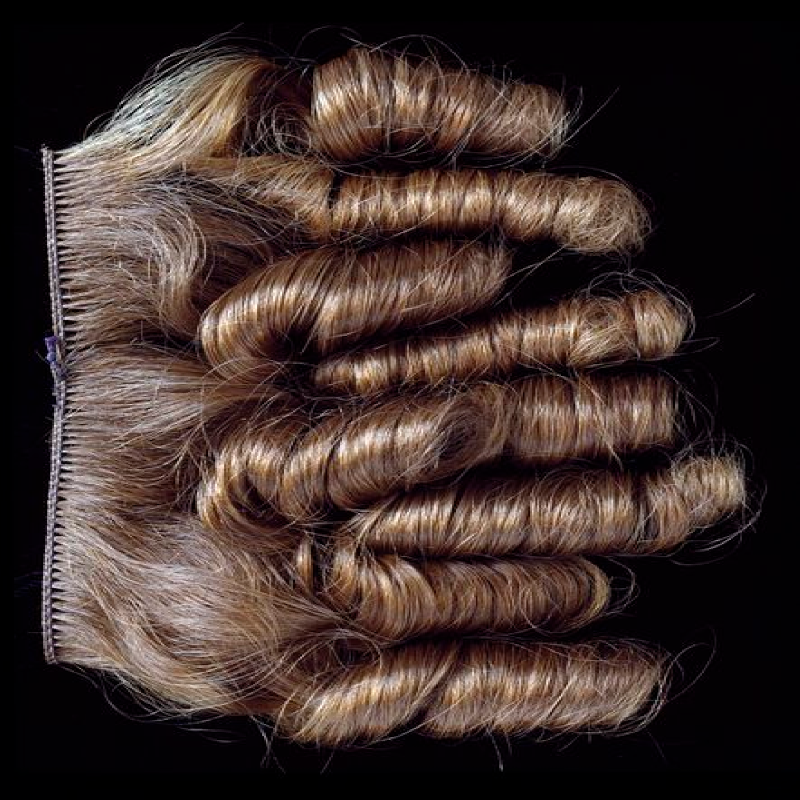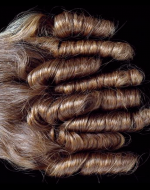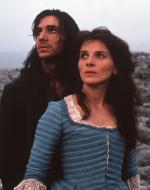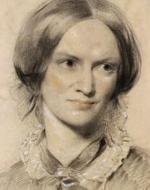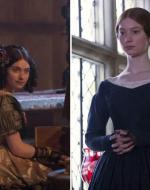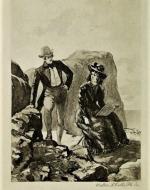Created by Gracie Tilney-Kaemmer on Thu, 11/10/2022 - 14:44
Description:
In Jane Eyre, Wuthering Heights, and The Tenant of Wildfell Hall, hairstyles have played important roles in character development. Reserved Helen Graham and her long glossy curls, uppity Blanche Ingram and her black ringlets, pious Jane and her hair combed behind her ears all represent different aspects of these characters' personalities. Carefree and unique, Emily was said to have fewer qualms over her appearance than her sisters. Of course, her heroine is often portrayed with her hair down and wild. Charlotte, who was made fun of in school for her “crimped, old womanish hairstyle” (Reef 22), gave her heroine a similar, more reserved hairstyle. In opposition to Jane, Blanche has a more upscale, curled hairdo, such that Aunt Branwell attempted to emulate with her curled hair piece. Anne, the most pious and “proper” of the sisters, gave Helen raven black curls, the very pinnacle of Victorian beauty. Throughout the novel, Helen’s hair is continuously described as untouched or “unstinted.” The sisters' heroines reflect not only the hairstyle they personally wore, but also the different social standards of beauty in Victorian England that carries from period illustrations to modern film representations of the novels today.
Victorian Era Curl Frontpiece: This is an example of a Victorian era hairpiece. Women would use a frontpiece to add an extra extravagence to their updo, especiallly if the woman in question did not have a natural curl in her hair. It resembles the one Aunt Branwell is described as wearing in Reef's biography. Aunt Branwell would have used this to emulate a pattern such as the one Anne was born with. It emulates a smooth natural curl pattern, which was highly prized as the beauty standard in Victorian era in England.
Branwell Brontë, Painted Portrait of Emily Brontë, 1833. The viewer can see Emily in full profile In one of her few confirmed portraits. Her hair in this particular image is interesting. She wears it loosely curled and down on her shoulders. This style was largely out of fashion, but it fits with Emily's lack of care about her appearance. Reef even writes, "Clearly, Emily gave little thought to her appearance. 'I wish to be as God made me,' she simply said" (Reef 66). In the next image, you, dear reader, will see how this "lack of care" is perfectly reflected in her Wuthering Heights heroine, Catherine.
Still of "Cathy and Heathcliff," Wuthering Heights, Director Peter Kominsky, 1992. Cathy's hairstyle in this movie adaption, which mirrors her description in the book, was unusual for a Victorian woman. It is unkempt and loose, telling of her less than upright moral character. Cathy is played by Juliette Binoche, and Heathlcliff is portrayed by Ralph Fiennes. This popular movie adaption casts Cathy and Heathcliff to adhere to their descriptions in the novel. Most Victorian women wore their hair curled and in some sort of updo, some even adding the curl pieces shown in the first image to further enhance their style. This style reflects Emily's unwillingness to adhere to traditional feminine beauty standards and trends of the era. Emily was said to not adhere to any specifically feminine style, and Cathy does the same, her hair loose and blowing wildly on the windy moors. Even on her deathbed, her hair is said to be "simply combed in its natural tresses over her temples and neck" (Brontë 109).
George Richmond, Chalk Portrait of Charlotte Brontë, 1850. In this portrait, Charlotte can be seen wearing the hairstyle that she most often sported. It was, like her sister Anne's, slightly old fashioned and out of style. This style was also far more reserved than hairstyles worn by women in Victorian high society. In Reef's biography of the sisters, she describes Charlotte being made fun of for her "crimped, old-womanish" hairstyle (Reef 24), shockingly similar to how Jane's hair is described in Jane Eyre, as stated below.
Side By Side Stills of "Jane and Blanche," Jane Eyre, Director Cary Joji Fukanawa, 2011. Hair in the Victorian era was a huge factor of social stature and appearance. This side by side of Jane (played by Mia Wasikowska) and Blanche (played by Imogen Poots) in Fukanawa's Jane Eyre gives a very good comparison of their looks and personalities. To begin, Blanche is wearing the peak of Victorian hair fashion. The extravagant curls likely came from a curl-piece as shown above or from an iron rod heated over an open flame before being applied to the hair. The hair was wrapped in tiny pieces of paper called, shockingly, curl paper, before the hot iron was applied. In addition to her curls, Blanche shows another hair indicative of her social stature--flower accessories are wound into her hair. In direct contrast to Blanche, Jane has a very modest, reserved hairstyle, typical of governesses. It is both practical and a bit old-fashioned, similar to how Charlotte wore her hair. Charlotte is believed to have based Jane off of herself, so it is no surprise that Jane is at odds with the rich, esteemed, and extravangant Blanche Ingram.
Charlotte Brontë, sketch of Anne Brontë, 1834. This sketch of Anne Brontë depicts the hairstyle she would have worn day to day that Reef mentions in The Brief Lives. Lightly curly, with a middle part and no bangs (they weren't in fashion yet), this hairstyle was the Brontëan reflection of high society. In the 1830s when Charlotte made this drawing, Victorian women wore their hair in a middle part, pulled back into a bun or braid, with curled sidepieces. Many women, like Aunt Branwell, had to add the pre-curled sidepieces, but Anne had curly enough hair naturally that she did not face this problem. While women of high society in this time would have their hair in long ringlets that had been dressed up, Anne's toned-down version reflects the Brontë's middle-class status.
Walter L. Colls, "What Did You Come For?" from The Tenant of Wildfell Hall (1847), by Anne Brontë, 1901 edition. Helen's hair in this image can be slightly difficult to see, but she is wearing a coiffure that reflects her status as a woman of higher society, while still retaining a more modest version of something that Annabella Wilmot would have worn. Anne wrote Helen with a more upscale version of the hairstyle she herself wore. Helen's "barley curls" in this image are pinned up in a low bun, and you can see that the silouette matches Anne's in the previous picture. Additionally, Helen's original description when Gilbert sees her is as follows: "disposed in long glossy ringlets, a style of coiffure rather unusual in those days, but always graceful and becoming" (Brontë 24). The key word here is "glossy." Hairstyle aside, the 1820s were when women began to wash their hair with soap when they bathed. This stripped their hair of any natural shine or oil, and only more women of the upper reaches were able to purchase a "fix" for this issue, such as vegetable oil or bear grease. Gilbert sets Helen apart with this description, and Anne is using a hairstyle to set up Helen's character as different from the rest of the town. Hair offers a glimpse of standards for Victorian women and the small differences that separated the social classes.

